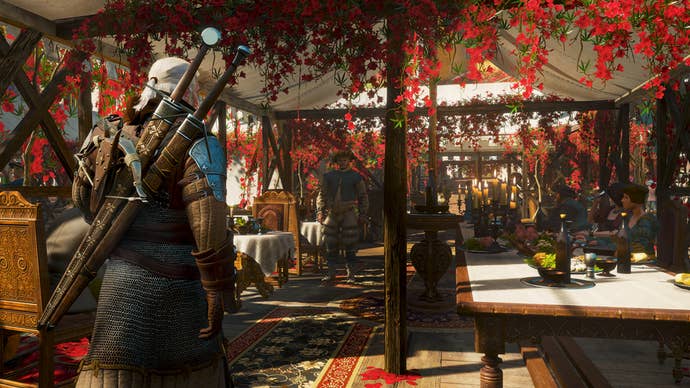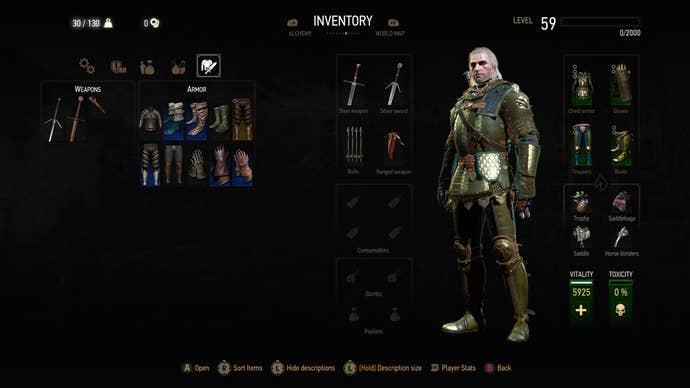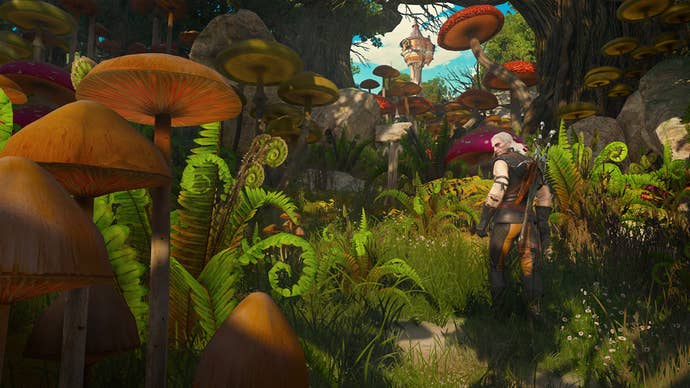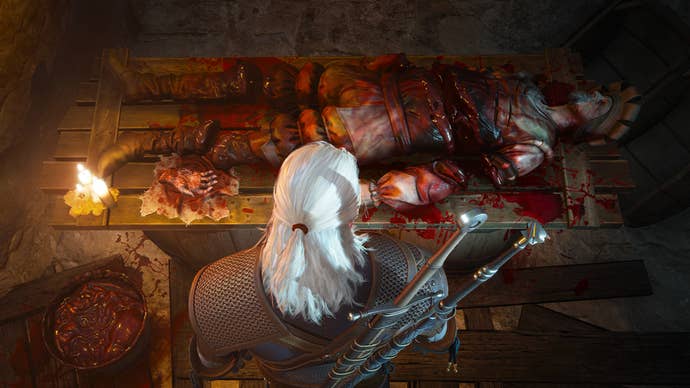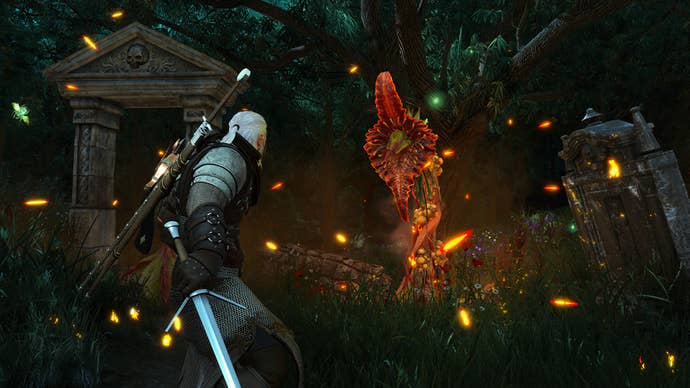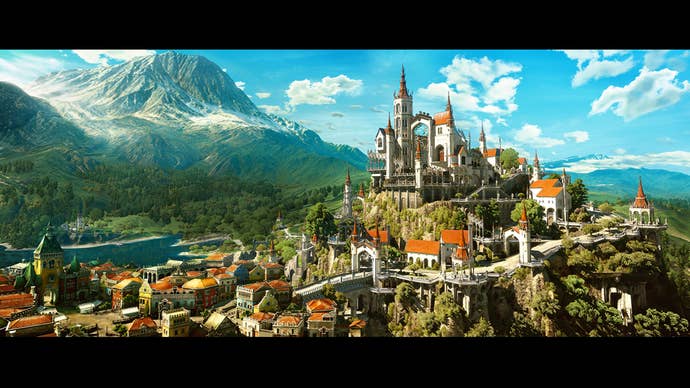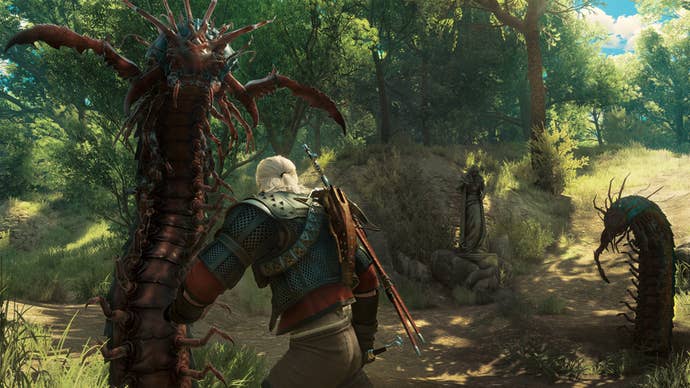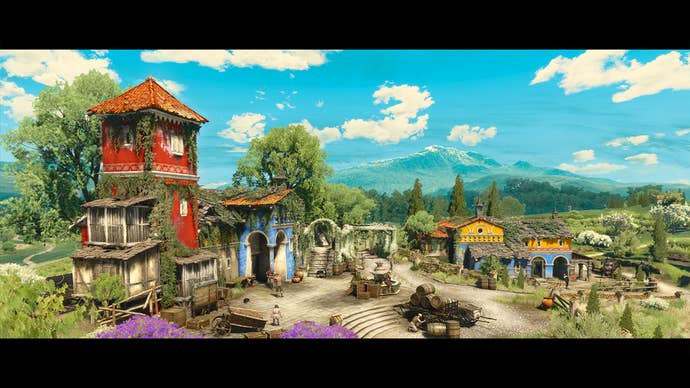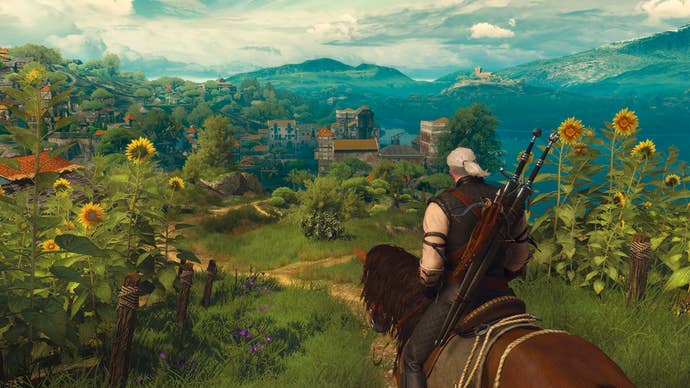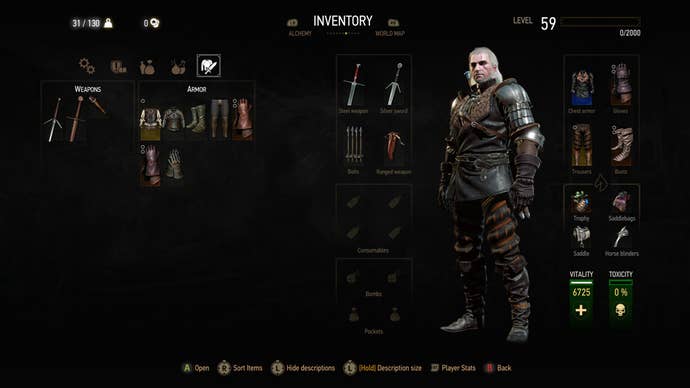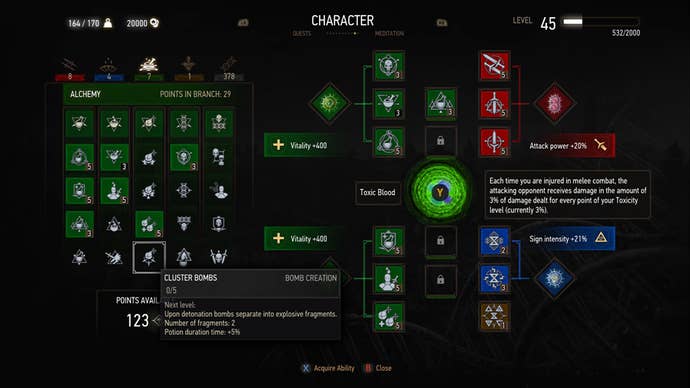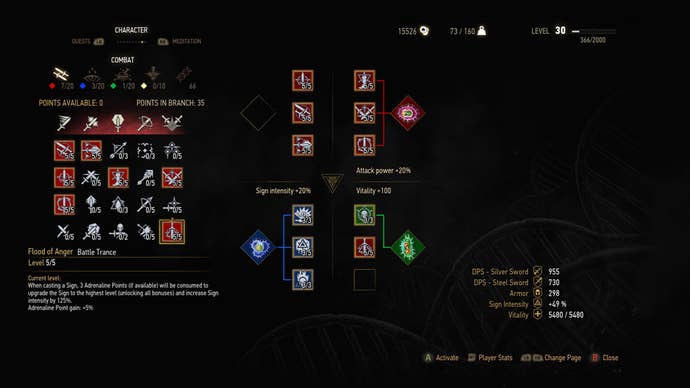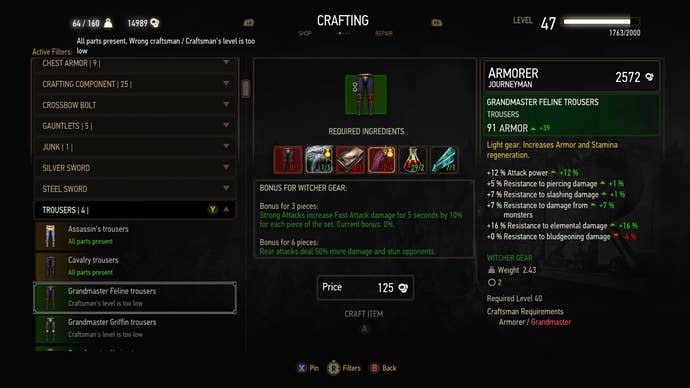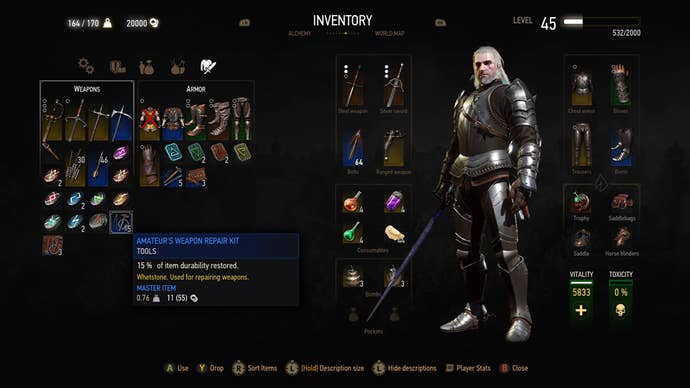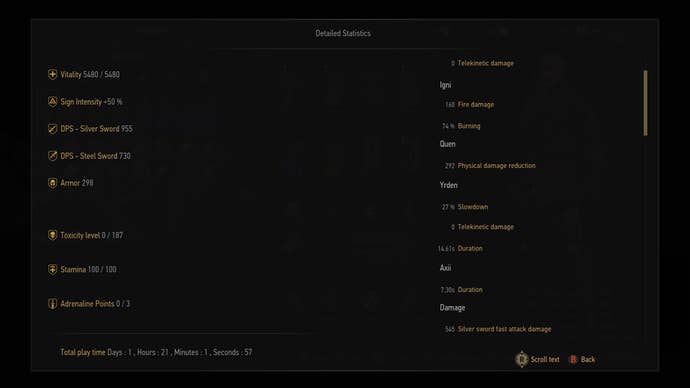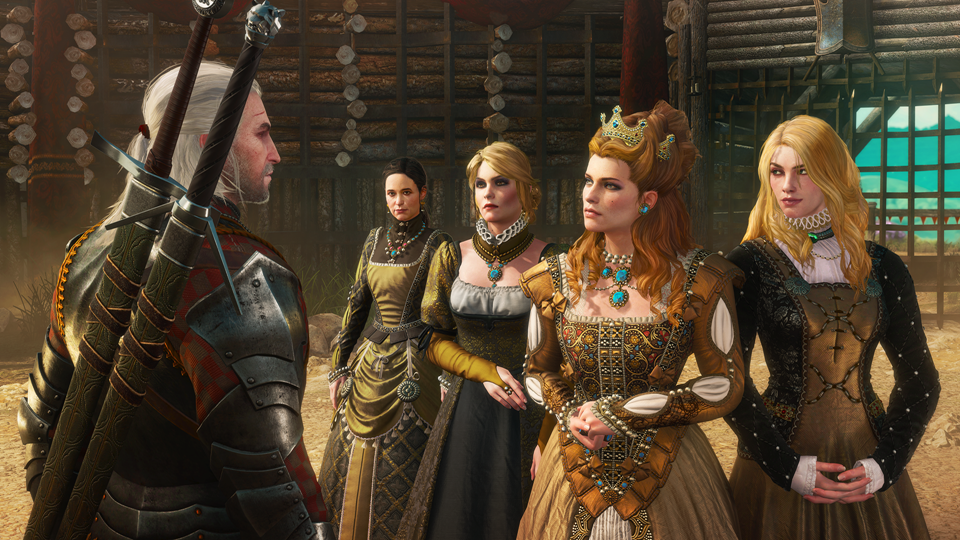The Witcher 3: Blood & Wine - hands-on with Geralt's retirement plan
Blood and Wine is a love letter to the series that made CD Projekt into the company it is today, and a heartfelt farewell to The Witcher.
"Several times I was simply shocked by the scope of the expansion. Opening the map and seeing its sheer size, flooding it with icons that’d put any jam-packed Ubisoft open-world map to shame."
It's fair to say that The Witcher 3 is already a strong contender for one of the best games of this console generation and indeed for one of the best RPGs in recent memory.
It's been a sales sensation too, with Geralt's adventure shipping over 10 million copies since its May 2015 launch. CD Projekt RED is ready to finally bring Geralt home for a well-earned rest - but they have to give him a home to go to first. That's what their final expansion pack for the game, Blood and Wine, is ultimately all about.
The most important distinction to make about Blood and Wine is, much like the previous expansion Hearts of Stone, in its name: Expansion Pack. Not Downloadable Content. When CD Projekt RED have released DLC for The Witcher 3 it's been free and piecemeal. The company doesn't believe in charging for things like, if you'll excuse the reductive 2006 meme, horse armour. When they do charge it's substantial, and after several hours of hands-on it's clear that Blood and Wine is significantly more substantial than even the last expansion pack, which was really rather extensive in itself.
What sets Blood and Wine apart from the previous effort is its landmass; it sees Geralt journey South to Toussaint, a remote kingdom that features gorgeous vistas of a different architectural, cultural and artistic style to the main game. Geralt is essentially dragged to the kingdom to perform a job for its royalty, but in the process he's offered an enticing reward: If he can solve a series of brutal murders that appear to be the work of a monster, he'll be rewarded not only with gold, but with a significant strip of land in Toussant in the form of a lovely little vineyard - an ideal retirement patch for the monster hunter.
CD Projekt claim that Blood and Wine's adventures will amount to something in the region of 30 hours of gameplay - and if true, this is incredibly impressive. Three hours wasn't nearly enough to fully experience it, and I did have a hard story cut-off where CD Projekt would load up a different save to stop me from seeing too much of the expansion's narrative, but what I was able to see seems significant.
There were several times I was simply shocked by the scope of the expansion. Opening the map and seeing its sheer size - comparable to Novigrad, CDP claim - was one. Another was when developers used some tricks to then unlock every single marker on said map, flooding it with icons that'd put any jam-packed Ubisoft open-world map to shame. During my hands-on, I stumble into what appears to be a multi-part quest around restoring a damaged statue or something of the sort - but the quest-line seemed to have so much to it I dared not spend too much of my precious hands-on time with it. That's a secondary quest too, completely unrelated to Geralt's main murder mystery hunt.
In downtime after the hands-on, some CD Projekt staff give me the bullet points on the expansion. They're good enough to repeat verbatim, though with the caveat that they of course came from the developers, who can sometimes excitedly overstate the size of their games. That said, Blood and Wine supposedly contains:
- 90 new quests
- 40 new points of interest
- Maximum New Game+ level upped to level 100
- 20 new monsters
- 30 new weapons
- An all-new Gwent deck
The things listed here are some of the lesser changes, though there are other notable adjustments including some nods towards additional customization. The Witcher is all about Geralt, and because of that players have less control over appearance than in some RPGs. With Blood and Wine there's an attempt to partially remedy that by letting players dye every single piece of Witcher gear in the game to more or less any colour they fancy. Dye can be bought, crafted, or simply found around Toussant.
Mutations are another new addition, offering 12 major abilities that can dramatically change how Geralt handles himself in combat. One mutation makes opponents knocked down by Aard die if they get knocked over, which seems a little ridiculous. Another can make signs able to land critical hits like any other combat move. These abilities are going to be hard to obtain, and are more designed with New Game+ players in mind.
Some other changes are less additions and more refinements to the gameplay experience. The user interface has been touched up nicely, and the Points of Interest system has been changed so that interacting with one point might impact others around it in subtle ways that'll hopefully make the open world feel more reactive in a full play-through.
Last but not least is Geralt's vineyard. CD Projekt don't consider it a spoiler to show and tell that eventually Geralt will gain possesion of that little slice of domestic life, and when he does some significant final features for hardcore Witcher 3 players will unlock.
"The main story seems to have some solid bloody and brutal intrigue to it and features some returning faces as well as a slew of new ones."
The Vineyard acts like a small base of operations for Geralt, and a posh retainer type will happily guide you through everything from interior design through to getting a better stable for Roach, Geralt's trusty horse. Some upgrades are strictly cosmetic, while others will offer real benefits. A weapon bench can be added for instance, and when used it'll offer a damage buff for a limited time. Providing Roach with that better stable will give him more stamina, and so on.
For those really into the roleplay side of things, you can display Geralt's finest gear on armour and weapon stands throughout his estate. All this costs a hefty in-game fee to add, but the upgraded vineyard really is something rather lovely to behold, and it feels fitting for Geralt's final outing to see him get something really nice for a change.
My three-hour hands-on was split pretty evenly three ways - I spent around an hour on the main story, an hour on side-quests, and an hour simply tooling around the world or upgrading Geralt's estate on a file which CDP had gifted enough gold to easily buy everything in order to see it all quickly.
The main story seems to have some solid bloody and brutal intrigue to it and features some returning faces as well as a slew of new ones. Early on it moves in a fairly linear fashion from one boss battle to another, including a fight that's a homage to the game's excellent A Night to Remember CG trailer. Even in those early stages the story twists in interesting little directions - at one point, Geralt finds himself partnered with the Duchess of Toussant (who is very cool indeed) and desperately trying to befriend a horse that's dressed like a unicorn in a race against the clock to save a life. Which, er, yeah, is wonderful. It's the right amount of silly, and Geralt's reaction is quite appropriate.
Outside of the main thrust of the expansion there's a lot of side quests as one would expect from The Witcher 3, but one of the major ones has already cemented itself as a particular favourite before I've even seen it to the end, for Geralt can take place in a traditional medieval knight tournament. It has a fun and lighter tone than the rest of The Witcher, and it's a great way to use existing mechanics in a different and new way.
Toussant itself is much the same; The Witcher 3's engine has proved itself incredibly well, though Toussant has obviously been seen as a challenge to put out something significantly different before the team moves on to something much more contemporary in Cyberpunk 2077. Toussant is colourful and pretty - the conceit being that unlike many of the lands where Geralt finds himself, it is untouched by the horrors of war. It has a different feel, and that's driven home in every way, from different music cues and wild, high fantasy foliage right down to the well-to-do nature of most of its inhabitants.
Three hours is rarely enough time for a truly enlightening hands on with an RPG, despite being three times that which the media tends to get on average. For expansions and DLC, however, it's often too much. Not so for Blood and Wine. It feels like a love letter to the series that made CD Projekt into the company it is today, and quite possibly a very heartfelt farewell to The Witcher. It very much appears to be everything that made Wild Hunt great with a refreshing twist thanks to a lovely new setting - and I can't wait to dive in more fully and see the conclusion of it's murder mystery when it launches proper.


